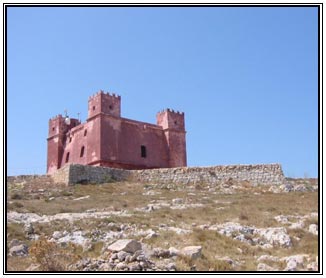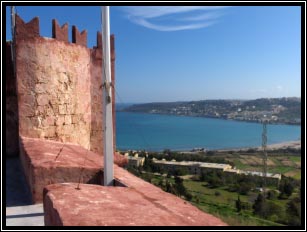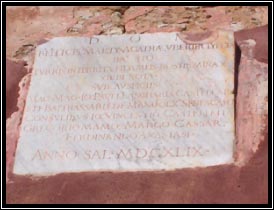A front view of the Red Tower


The Red Tower or Fort St. Agatha was one of the seven towers built by Grand Master Lascaris. These towers were proposed by the military engineers Blaise Francoise, Comte de Pagan and his assistant Blondel des Croisettes. Fort St. Agatha is the largest tower to be built in the village. Although the military engineers were French, it seems that Italian military influence still predominated in Malta. A number of large towers were built on this Island, which served to protect vulnerable bays from Ottoman or corsair attacks. Other large towers were built in different parts of Malta, including Santa Marija Tower on Comino.
The tower’s construction was financed by the Universita of Imdina, and the first stone was laid in 1647 and completed on the 20th November 1648. As I said before, this fortification which in fact was a large tower, its design is square and in its corners has four turrets. The tower consists of a number of stairs and a large central door, which during the Knights was defended by a drawbridge. After entering the door there are two rooms in the ground floor, which houses the only rooms in the tower. 2
In the past there was a spiral staircase, but when the tower was restored by Din L-Art Helwa it was fitted with a winding-staircase which leads one to the roof where guns were installed. On the back side of the Red Tower there is a low star shaped gun platform where a number of cannons were installed there. The first artillery was installed a year later in 1649. It seems that this tower was armed with four cannons but in 1770 there were five cannons of different calibers. Fort St. Agatha was painted red, thus referring to its other name Red Tower, because it was much easier for the guards at Naxxar and Imdina to identify it without much difficulty.3 On top of its entrance a placate was fixed. It says:
D.O.M
References:
Researched and Written by: Charles
Debono B.A.(Hons) History |
©Copyright
2003-2004. All rights reserved.
All
copyrights and trademarks are the property of their respective owners.



